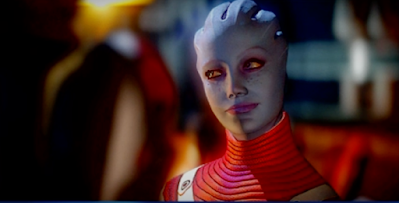Zack Snyder's Justice League - An Artist's Triumph, An Audience's Loss
By Ephraim Belnap
After three years of back-and-forth, public discourse, number crunching, and negotiation, Zack Snyder's Justice League - the vision of the movie the director would've gotten to make if he hadn't been interrupted by a terrible family tragedy - is here. It was shopped as a possible television miniseries, then retooled as a four-hour feature divided into six parts. Available on HBO Max, it's possible for anyone to watch a superhero spectacular with their family for only $15, as well as everything else on the HBO streaming service. There's only one problem with it.
It's awful.
Batman V. Superman - directed and written by the same people - got savaged by critics and audiences, with three major criticisms; it was too long, it was too grim, and half the plot points seemed deeply stupid. It was understandable, though - DC and Warner Bros wanted to compete with Marvel Studios so bad that they were pushing their films out half-baked. Some blame definitely belonged with director Zack Snyder, but ultimately it was a team effort that doomed the world's most famous heroes to a grimdark snoozefest.
The lesson to be learned was that they needed to hire some better writers and compensate for weak spots. The follow-up to it, 2017's Justice League - which after Snyder's departure was reshot, rewritten and received middling critical reception - seemed to have heard this. Because while it felt rushed, it was an energetic, well-paced action flick about unlikely heroes uniting to stop a planetary conqueror. Every DC film since has followed that lead and been praised for it. Aquaman managed to crack a billion dollars at the box office!
But now that we can watch this approximation of the original cut, it's clear that the original Justice League was just an agonizing repeat of the mistakes that doomed Batman Vs. Superman. While the same plot is intact - an alien invader prompts the heroes' unification to do battle - the film somehow manages to do much less with much more. The imagery is spectacular; Greek gods and Amazons, alien lords and portals. But it's all so much papering to conceal a flimsy foundation.
Every complaint about the '17 Cut's plot is intact, and often made worse. For the sake of brevity, I've written a list. Character motivations are trotted out in excruciating length, yet feel less convincing. Additional material is fun, yet often glaringly wooden. The new Big Bad seen in the trailer amounts to a glorified cameo. The real Big Bad - Steppenwolf - has improved CGI, but still amounts to a videogame character swinging a digital axe. Somewhere around the ninth slow motion sequence, you start to wonder if you're watching an art museum presentation. Somewhere around the tenth instance of ominous wailing on the soundtrack, you start to wonder if this is a music video for Iranian opera.
It is truly difficult to encapsulate the experience of watching this, because it is hard to relate how drawn-out and unaware it is. But at the heart of it, it comes down to the core, embodied by the characters themselves. And that's the real problem.
Zack Snyder's heroes are not interested being heroic. They're not interested in being lively. They're interested in walking in slow-motion, contemplating their navels, and wallowing in ennui. Objectivist tools who save the world out of Randian interest. Nary a smile is cracked, and nary a selfless act is done.
There's a lot to be said about superheroes, how they can undoubtedly encourage fascist instincts, or childish self-entitlement or incorrect fantasies of social control. But at their core, the concept of superheroes is built around protecting vulnerable people from bullies. And anyone who's been on a playground can endorse that. That's the cover of every comic. And it's stunning and saddening to see this big production miss that.
Zack Snyder's Justice League is a misfire. 2.5 out of 5.





Comments
Post a Comment